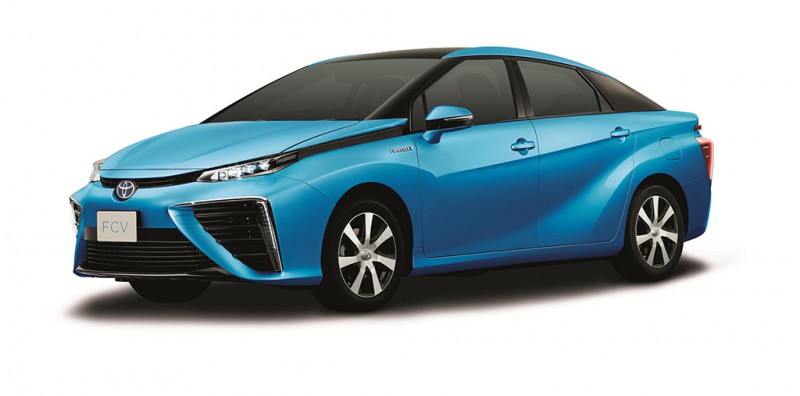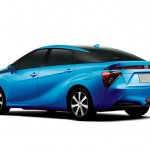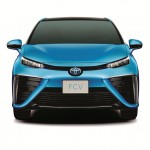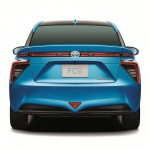Toyota has today revealed the exterior design and Japanese market guide pricing of its hydrogen-powered Fuel Cell Sedan, following the car’s appearance in concept form at last year’s Tokyo motor show and earlier this year when Toyota showed off the capability of the car to be plugged in and power a home.
The four-door saloon will be introduced first in Japan, before April 2015. Preparations are in hand for launches in the US and European markets in the summer of 2015.
In Japan the Fuel Cell Sedan will be sold at Toyota and Toyopet dealerships, priced at approximately seven million yen (about £40,450). Initially sales will be limited to those parts of the country where a hydrogen refuelling infrastructure is under development. Prices for Europe and the USA have not yet been decided though the Japanese pricing is a good indication of what to expect. Detailed information such as final prices, specifications and sales expectations will be announced later.
Toyota’s commitment to developing vehicles that are kinder to the environment is based on three principles: embracing diverse energy sources; securing low vehicle emissions; and driving positive environmental change by making these vehicles popular with customers.
Toyota feel that hydrogen has great potential as an alternative fuel. It can be produced from a wide variety of primary energy sources, including solar and wind power; it is easy to store and transport; and when compressed, it has a higher energy density than batteries. It could also be used in a much wider range of applications beyond automotive and domestic use, including large-scale power generation.
Toyota has been developing fuel cell vehicles in-house for more than 20 years. Its system includes a proprietary FC Stack, which generates electricity from the chemical reaction between hydrogen and oxygen, and high-pressure hydrogen tanks. The technology was featured in the Toyota FCHV (fuel cell hybrid vehicle), an SUV which was leased to customers on a limited basis in Japan and the USA from 2002.
Since then, Toyota has significantly improved their FC system. The Fuel Cell Sedan revealed today, for example, delivers performance and a cruising range similar to that of a petrol-engined vehicle, and refuelling takes roughly three minutes. When driven, the car’s only tailpipe emission is water vapour, produced by the chemical reaction between the hydrogen and oxygen.
Fuel cell vehicles contribute to the diversification of vehicle fuels. They emit no carbon dioxide or substances harmful to the environment when driven, but offer the convenience associated with petrol-powered vehicles. Toyota believes the technology has great potential in the development of vehicles that are kinder to the environment and ideal for helping deliver sustainable mobility.
Karl Schlicht, Executive Vice President Toyota Motor Europe, said:
“We are very excited by the arrival of fuel cell technology. Of course there are many challenges ahead, such as the availability of fuelling infrastructure and customer awareness. But our history with hybrid gives us all the experience we need to bring a new technology to the market. In Europe we will be taking it step by step, gradually introducing the car in selected markets. But we are confident that hydrogen will become increasingly popular as a way of powering vehicles.”
Toyota companies are also engaging in other hydrogen-related initiatives, such as developing and testing fuel cells for use in homes, and designing fuel cell forklifts and buses.
The jury is out as to what we think of the looks. On the one hand, it looks bulky and the tiny looking wheels create a sense of ungainliness. On the other hand, Toyota successfully established a new design philosophy with the Prius mk2 whcih they had previously failed to achieve with it’s forbears that were not sales successes. In other words, if it looked too much like an ordinary car, it may not appeal to the type of buyer that should be interested in such a pioneering and technically advanced car. However, at this price range, it is up against some stiff competition and as such the performance figures and interior will have a large impact on buyer’s decisions.
Source; Toyota




